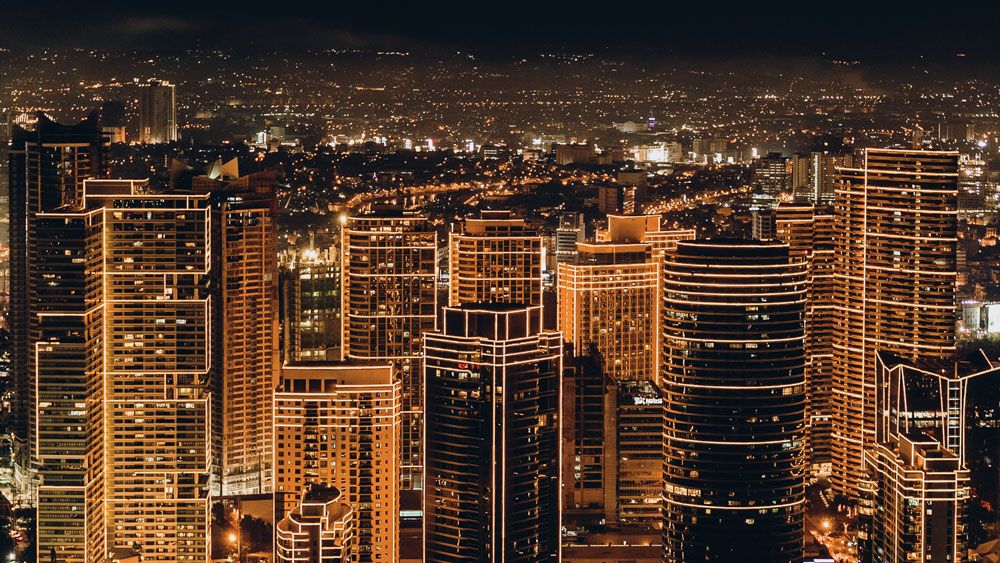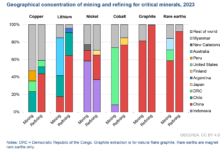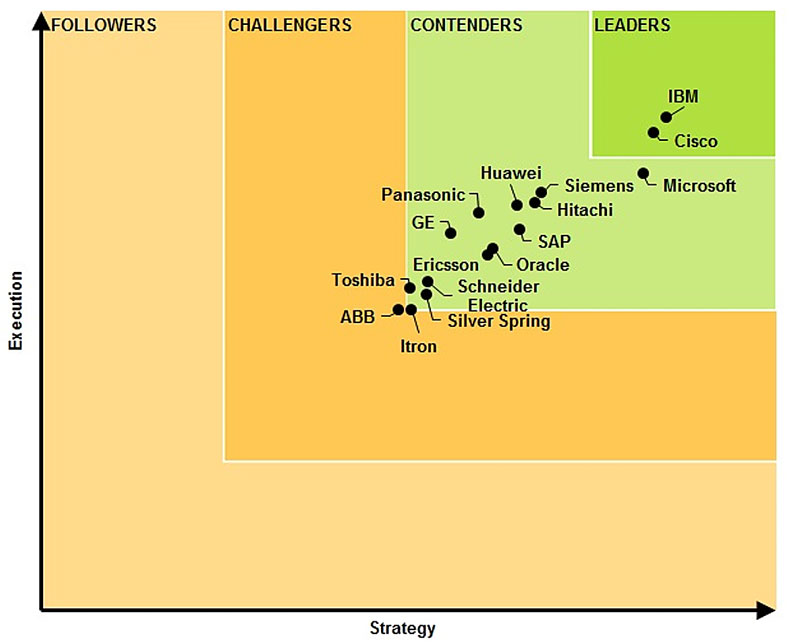Smart City – Driving Through a Fairytale
With the increasing effects of natural disasters, abnormal weather effects and the emerging threat of global warming hovering above humanity, the concept of a ‘Smart City’ must be merged with sustainability for achieving the balance between human prosperity and our natural habitat.
History – Context
Until the 1800s, only 2% of the global population lived in urban areas. By the dawn of the 20th century, the number had increased to nearly 13%, and finally in the year 2000, the percentage of people located in urban areas reached 47%. According the United Nations’ ‘World Urbanization Prospects’ report published in 2018, over three quarters of the world’s population is expected to live in urban areas by the year 2050. Currently more than half (55%) of the global population resides in cities. Between now and 2020, the global urban population is expected to jump by about 1.84% per year. This surge towards urbanization is understandably currently occurring at a higher rate in developing countries than in developed nations.
The origin of the need: Urbanization
It is difficult to exact the causes of urbanization, both in terms of physical land area and population size. When discussing urban land expansion (the process whereby the planet’s surface is configured for urban uses), for example, studies indicate that growth in GDP per capita is highly influential upon urban land expansion in China and North America whereas this was less so the case in India, Europe and parts of Africa (where population growth plays a much larger role in urban land expansion). The rise of urbanization is sufficiently linked to economic growth, industrialization and the perception of better employment prospects.
The United Nations views urban centres as drivers of economic and human capital development and argues that “a critical mass of people, ideas, infrastructure and resources acts as a magnet of development, attracting migrants, private firms, investors and developers. All of this enhances the prospects for more employment opportunities, wealth creation, innovation and knowledge, which are all major factors of prosperity.”
A 2013 study by Harvard University economist Edward L. Glaeser found that while there is an overall correlation between economic and urban development, cities that support urbanization with appropriate and adaptive policies, institutions and strategies fare far better than those that don’t.
UN under-secretary-general and executive director of UN Habitat, Dr. Joan Clos signifies the urgency for efficient, integrated city planning by outlining the way urban centres affect the environmental scale: up to 70% of greenhouse gas emissions originate from urban areas which comprise just 4% of the planet’s land mass.
This trend towards an increase in the population in cities, coupled with the polarized economic growth, spearheaded by the same urban centres, underlines the rising reliance upon digital technologies in daily life and the need to decrease greenhouse gas emissions (GHGs). This is exactly the driving force pushing forward the need for so-called ‘smart cities’, meticulously-planned urban areas that incorporate digital infrastructure to promote accessibility, eco-friendliness, resource efficiency and safe management of an influx of residents.
The manifestation of the need: Pollution
Urbanization does not come bearing gifts only; it also comes with challenges. Many cities are plagued with various environmental, social and economic issues such as resource scarcity, congestion, pollution, poverty, lack of affordable housing, proliferation of informal dwelling, as well as sewerage and sanitation problems.
Speaking of environmental challenges, one cannot dismiss climate change, largely attributable to human activities, as one of the most critical issues impacting our planet. Climate change brings adverse consequences such as threats to biodiversity and ecosystems, risks to human health, rising sea levels due to accelerated melting of glaciers and ice caps, increasing water stress as well as a decline in agricultural productivity. These issues are driving many worldwide economies and cities to focus on mitigating (GHGs) in order to push back the impact of climate change.
Cities account for the majority of greenhouse gas emissions and energy consumption across the globe. In fact, cities account for 60–80% of energy consumption across the globe and for more than 70% of worldwide carbon dioxide emissions. In order to provide better living conditions for existing and future generations, cities need to improve by adopting the smart route and at the same time focusing on the sustainability aspect.
As cities are economic growth drivers in most of the nations, urbanization is projected to increase further in the near future. This, in turn, will drive the depletion of non-renewable resources as well as add to the extent of carbon dioxide emissions.
Innovation must be combined with energy, digital technology and information and communications technology to address urbanization challenges and ensure sustainability. Sustainability covers not just the environmental aspect but also social equity and the economy.
The solution: Smart Cities Definition
The concept of a ‘Smart City’ combines sustainability and innovation for achieving the balance between human prosperity and our natural habitat. The merging of innovation with technology will dramatically contribute in optimizing the management of infrastructure and resources and, at the same time, focusing on inclusiveness and a greener environment.
Many ‘sustainable’ projects were devised and executed, on an international, national, municipal, local and individual level. There was one problem: they were not financially sustainable. The return on investment (ROI) for sustainable solutions was too low for all the levels mentioned.
But there is a sustainable ROI for smarter solutions. The megatrend of the last decade — Green products — will be replaced in this decade by Smart products and services.
A smart city is an innovative urban centre that uses information and communication technologies (ICTs) among other means to improve quality of life, efficiency of urban operation and services, and competitiveness, while ensuring that it meets the needs of present and future generations with respect to economic, social and environmental aspects.
Due to the irredeemable complexity of how cities are operating, growing, and financing themselves there can be no easy fixed definition for ‘Smart Cities’. Nevertheless, the notion can be broken down as the process by which cities and urban areas become more efficient, livable and environmentally friendly by maintaining incentives for investment. In the words of the Committee of Digital and Knowledge-Based Cities to be precise, “a city can be considered as ‘smart’ when its investment in human and social capital and in communications infrastructure actively promote sustainable economic development and a high quality of life, including the wise management of natural resources through participatory government.”
Depending on the situation, a smart approach to city planning may include some of the following elements:
- Modern efficient, and intelligent infrastructures such as smart energy grids and effective waste management;
- Information integration with communications technologies that support and enhance day-to-day urban life;
- Accessible and citizen centric urban design;
- Adaptive planification methods that accommodates new and existing residents and where city planners can learn from experiments and create new models;
- Transparency, where all citizens have access to data from city services and establishments.
Smart Cities – The future
Climate expert and strategist, Boyd Cohen narrows the notion down with his Smart Cities Wheel, analysing smart cities with distinct six factors:
- Smart Economy;
- Smart Environment;
- Smart Governance;
- Smart Living;
- Smart Mobility;
- Smart People.
According to consulting firm Frost, by 2025, 26 cities around the globe will be deemed as smart (i.e. meeting five or more of their eight criteria) with the majority of these being in North America and Europe.
Designs and initiatives for smarter cities are spawning on a global scale with an immense rise in Brazil, India, North America and Europe. This rise is also accompanied by a number of national, international and multinational plans for the promotion of Smart City. One of the most well-known proposals is the European Union’s (EU) initiative on smart cities, also known as the ‘European Innovation Partnership for Smart Cities and Communities’. The initiative, which was launched in 2011, currently has a budget of almost 100 million EUR (for the period of 2014-2020) and plans on “strategic partnerships between industry and European cities to develop the urban systems and infrastructures of tomorrow”.
Initiatives: Public and Private Sector Collaboration
Public-private partnerships (PPP) has been hailed as the preferred route for developing smarter and sustainable city projects around the world. Large global players, with their wealth of knowledge and resources, are investing in R&D and focus on developing customizable solutions that can be replicated and scaled up around the world. Innovative start-ups and local players will also play a critical role.
According to a report by Frost & Sullivan, smart cities are anticipated to create huge business opportunities across different industries with a total market value of USD 1.6 trillion by 2020. Technologies such as smart metering, wireless sensor networks, open platforms, high-speed broadband and cloud computing are key building blocks of the smart city infrastructure. Research shows that two companies are top vendors in the ‘smart city’ tech market with IBM and Cisco in podium positions.
While the investment opportunities increase, the business focus naturally turns towards ROI and measurable, specific indicators.
Sustainable Development Goals (SDGs)
The SDGs are a proposed set of global development targets to be adopted by governments around the world. There are currently 17 goals with 169 indicators that will define the global sustainable development agenda post-2015. Spearheaded by the United Nations, the SDGs are here to replace the Millennium Development Goals (MDGs).
The MDGs led to unprecedented progress in certain areas but fell short of transforming societies, as they were focused solely on poverty alleviation in the developing world. The SDGs, on the other hand, will be globally relevant and present a holistic approach to progress by embracing economic, social and environmental dimensions. As governments gear up to sign the SDGs, key roles will be carved out for multiple stakeholders, including society and businesses.
Besides public funding, the list includes possible funding from multi-lateral and bilateral development agencies, pooled municipal debt obligation facilities, municipal bonds, real estate investment trusts and infrastructure investment trusts. Smart and sustainable projects targeting climate change mitigation and adaptation may access the Green Climate Fund (GCF) of the United Nations Framework Convention on Climate Change (UNFCCC).
Projects with positive environmental benefits can also utilize the green bonds. Projects that are in the spirit of corporate social responsibility (CSR), as defined by the Companies Act, 2013, may attract funds from companies with significant unspent CSR budgets. Crowd-funding has also been identified as a potential route for supporting citywide projects.
Energy Perspective
The natural evolution of green products and services shows the way into becoming smart ones, with intelligent sensing technology and Internet connectivity with a direct aim at unilateral optimization. Smart cities are expected to create huge business opportunities, with a multi-trillion market value by 2020. And companies implementing smart solutions can earn lots of money by stepping into this market. In fact, we have:
- Megacities targeting decarbonization, creating demand for permanent and efficient products and services from the Energy sector;
- Digitalization and AI as another driver formulating the market;
- Electric cars, with Tesla spearheading the market, bringing with it a range of new services;
- Citizens/Consumers in take a leading role, in governance, pursuing more platforms to engage with the energy sector and request sustainable solutions;
- The need for collaboration between different cities and different partners, sharing knowledge and especially sharing data.
These are some of the corporations leading the transformative initiatives to shape the market at this point:
Here is how the field is mapped based on Execution and Strategic Initiatives from the private sector.
One of the most brilliant and futuristic projects, showcasing what the Public and Private sector collaboration can offer, is the Smart Highway in Holland. Recent innovations such as ‘dynamic paint’ and ‘interactive light’ can now integrate these features right into the road surface itself, creating new ways highways communicate, bringing us closer to the ubiquitous ‘Smart Highway’ – the name Daan Roosegaarde and Heijmans Group called their pioneering concept.
Charging at daytime, glowing at night, three photo-luminescent green lines run along each side of the dual carriageway indicating the edges of the road. Among other suggestions for Roosegarde (route N329), are temperature-reactive paints that will indicate to drivers when roads are icy, interactive street lamps that come on as vehicles approach then dim as they pass by and ‘wind lights’ powered by the air from passing vehicles.
That is how the future could look like: “Driving through a fairytale”.









